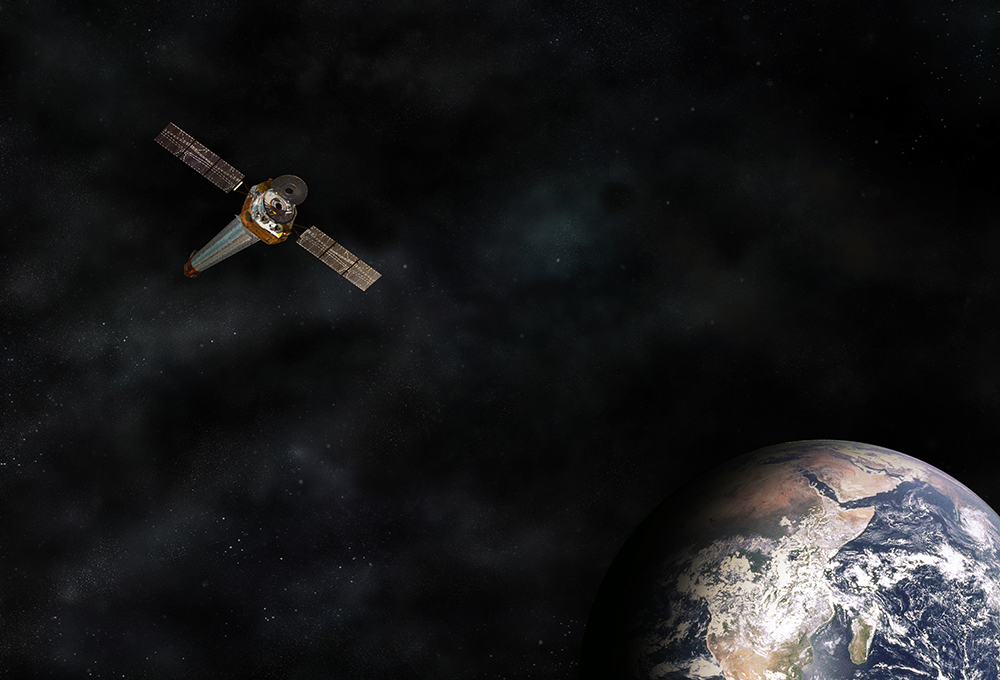
NASA's Chandra X-ray Observatory has bounced back from the glitch that knocked it offline two weeks ago.
That glitch was caused by an orientation-maintaining gyroscope, whose misbehavior caused the venerable space telescope to go into a protective "safe mode" on Oct. 10. But mission team members were able to establish a new gyroscope configuration, and Chandra resumed science operations on Sunday evening (Oct. 21), NASA officials said.
"The team initiated a set of maneuvers to change the pointing and orientation of the spacecraft to confirm that the gyroscopes were behaving as expected," agency officials wrote in a mission update today (Oct. 24). [Our X-Ray Universe: Amazing Photos by NASA's Chandra X-Ray Observatory]
"During the coming week, scientists will collect spacecraft data to fine-tune the performance for the new gyroscope configuration," they added. "As a final step, the team will uplink a software patch to apply any necessary adjustments to the onboard computer."
Chandra has been studying the heavens in X-ray light since 1999, when it launched to Earth orbit aboard the space shuttle Columbia. The telescope has made many important discoveries over the years — helping astronomers observe the formation of gigantic galaxy clusters, for example, and map the distribution of mysterious dark matter throughout the cosmos.
Chandra is one of four spacecraft launched between 1990 and 2003 under NASA's "Great Observatories" program, along with the Hubble and Spitzer space telescopes and the Compton Gamma Ray Observatory (CGRO).
A gyroscope failure brought CGRO's mission to an end after nine years in 2000, and a balky gyro has recently bedeviled Hubble, though the famous scope is expected to recover soon. Spitzer, like Hubble, remains active today.
Get the Space.com Newsletter
Breaking space news, the latest updates on rocket launches, skywatching events and more!
Shortly after Chandra opened its eyes once again, another storied NASA space telescope went to sleep. The Kepler spacecraft, which has discovered about 70 percent of the 3,800 known alien planets, has gone into a "no-fuel-use sleep mode," NASA officials announced yesterday (Oct. 23).
This is no great surprise. Kepler has been running low on fuel for months, and the telescope's handlers have stressed that the end is drawing near.
Mike Wall's book about the search for alien life, "Out There," will be published on Nov. 13 by Grand Central Publishing. Follow him on Twitter @michaeldwall. Follow us @Spacedotcom or Facebook. Originally published on Space.com.
Join our Space Forums to keep talking space on the latest missions, night sky and more! And if you have a news tip, correction or comment, let us know at: community@space.com.

Michael Wall is a Senior Space Writer with Space.com and joined the team in 2010. He primarily covers exoplanets, spaceflight and military space, but has been known to dabble in the space art beat. His book about the search for alien life, "Out There," was published on Nov. 13, 2018. Before becoming a science writer, Michael worked as a herpetologist and wildlife biologist. He has a Ph.D. in evolutionary biology from the University of Sydney, Australia, a bachelor's degree from the University of Arizona, and a graduate certificate in science writing from the University of California, Santa Cruz. To find out what his latest project is, you can follow Michael on Twitter.









